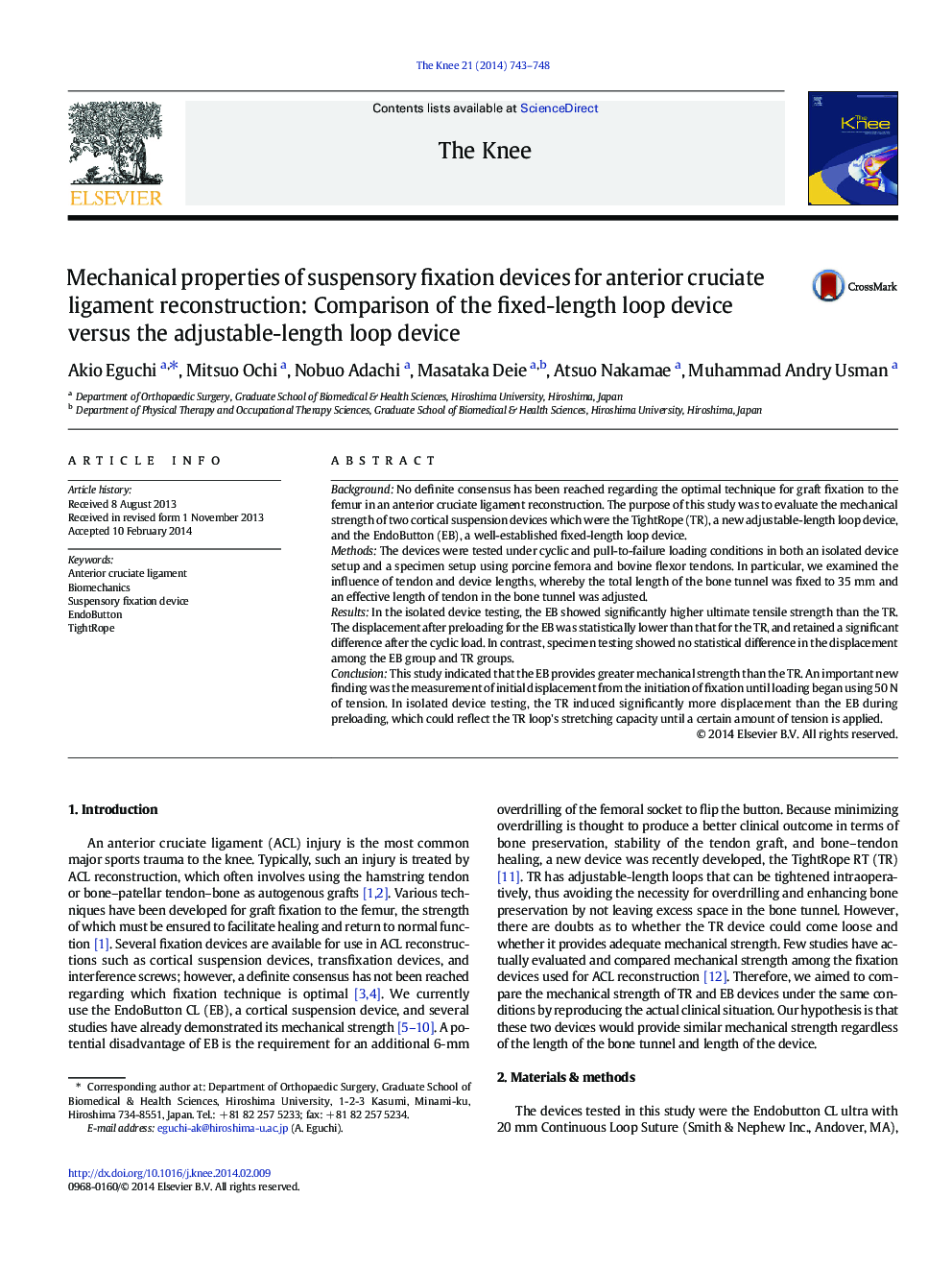| Article ID | Journal | Published Year | Pages | File Type |
|---|---|---|---|---|
| 4077468 | The Knee | 2014 | 6 Pages |
BackgroundNo definite consensus has been reached regarding the optimal technique for graft fixation to the femur in an anterior cruciate ligament reconstruction. The purpose of this study was to evaluate the mechanical strength of two cortical suspension devices which were the TightRope (TR), a new adjustable-length loop device, and the EndoButton (EB), a well-established fixed-length loop device.MethodsThe devices were tested under cyclic and pull-to-failure loading conditions in both an isolated device setup and a specimen setup using porcine femora and bovine flexor tendons. In particular, we examined the influence of tendon and device lengths, whereby the total length of the bone tunnel was fixed to 35 mm and an effective length of tendon in the bone tunnel was adjusted.ResultsIn the isolated device testing, the EB showed significantly higher ultimate tensile strength than the TR. The displacement after preloading for the EB was statistically lower than that for the TR, and retained a significant difference after the cyclic load. In contrast, specimen testing showed no statistical difference in the displacement among the EB group and TR groups.ConclusionThis study indicated that the EB provides greater mechanical strength than the TR. An important new finding was the measurement of initial displacement from the initiation of fixation until loading began using 50 N of tension. In isolated device testing, the TR induced significantly more displacement than the EB during preloading, which could reflect the TR loop's stretching capacity until a certain amount of tension is applied.
